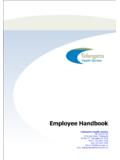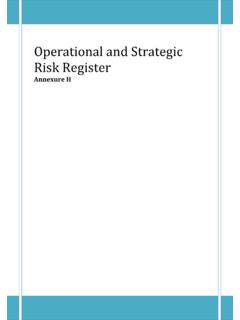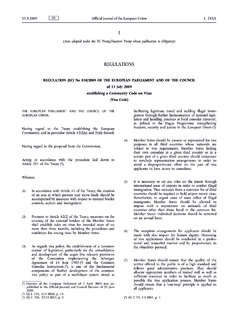Transcription of Food Safety Emergency Response Planning
1 TECHNICAL TRAINING ON RISK ANALYSIS FOR SAARC COUNTRIES. Delhi, India, June 17-21, 2013. FAO RAP, Bangkok, Thailand Quality Council of India food Safety Emergency Response Planning Shashi Sareen Senior food Safety & Nutrition Officer FAO Regional Office for Asia and the Pacific Bangkok, Thailand 1. food Safety Emergency ? Codex Alimentarius definition : A food Safety Emergency is a situation whether accidental or intentional, that is identified, by a CA as constituting a serious and as yet uncontrolled foodborne risk to public health that requires urgent action. Codex Alimentarius, document CACGL-19. food and Agriculture Organization of the United Nations Emergency , Incident and Event? Definitions: food Standards Any event there are concerns about actual or Agency of the UK suspected threats to the Safety and quality of food , (2009): an incident require intervention to protect consumers US FDA (2005): An unforeseen combination of circumstances that an Emergency calls for immediate actions AUS National food Any situation where is a risk, potential risk or incident Response perceived risk of illness or confirmed illness control (2007): associated with the consumption of food a food incident Public Health An event which includes the following four criteria.
2 Emergency of 1) Seriousness of public health impact International 2) Unusual or unexpected nature of the event Concern (PHEIC) 3) Potential for the event to spread internationally (under IHR, 2005) 4) The risk that travel or trade restrictions may result from the event Emergency , Incident and Event? Definitions: Bangladesh a situation arising from intentional or unintentional contamination of food with biological, chemical, radio-nuclear or physical hazards that is identified, by a CA as constituting an uncontrolled food borne risk to public health, economy and trade that requires urgent action Thailand any event of food Safety , whether accidental or intentional, caused by chemical, biological & physical hazards of food , that is serious & unable to be controlled in normal food control system, risk & impact to life, public health, trade, economic and politic, both national & international level, that requires urgent action & multi-agency coordination approach from involved food Safety agencies.
3 Japan A situation where there is/may be significant foodborne risk to public health that requires urgent action to ensure the food Safety . Specifically, the incident causes large-scale and/or wide spread damage. Definition will differ along national contexts We recognize that: a situation ranges from minor incident to major crisis a situation evolves over time severity varies (ie mortality, morbidity). international and trade implications vary Plan ensures the coordinated Response to a potential or confirmed risk to public health through food food Safety Events ? Major crisis Minor incident No standard in international approach - must make sense for each country Situation evolves over time Response is scalable to meet the changing needs of the event (resources, coordination, decision making). Factors that effect Response numbers effected; severity of illness; volume of food effected; contaminant known/ unknown; structures in a country; etc Nature of Emergencies Emergencies of any description are characterised by: Unpredictability Confusion Lack of Information Lack of Time Pressure to Act Loss of Control food and Agriculture Organization of the United Nations Publications from FAO/WHO.
4 On food Safety Emergencies FAO/WHO framework for developing national food Safety Emergency Response plans (FAO/WHO, 2010). FAO/WHO guide for application of risk analysis principles to food Safety emergencies food Safety risk analysis: a guide for national food Safety authorities . (FAO/WHO, 2006. FAO/WHO Guide for developing &. improving National food Recall Systems Why Panning & Preparedness Reduces the number of decisions during an Emergency Enables timely & coordinated Response Reduces confusion (and disagreement). Agreed structures, roles & responsibilities Legislative authority & limitations understood Templates, decision trees, other tools increase efficiency Minimizes adverse impact on health & disruptions to trade FAO/WHO Framework for Developing FSER Plans Steps for development of FSER Plan 3 preliminary steps Step 1: Obtain high-level support (& mandate).)
5 Step 2: Identify key partners (agencies with some responsibility for food Safety ). Step 3: Establish a Planning group 5 key elements : Step 4: Essential background information Step 5: Multi-Agency Coordination Group (MACG). Step 6: Incident identification & management Step 7: Post-incident review & evaluation Step 8: Communication The Planning Group will: Lead the process of developing a Plan Determine scope of the plan Oversee preparation of the plan Ensure appropriate review & consultation with key partners Collect legal texts, integrate with other national Response plans, etc Seek approval Evaluate the plan periodically & ensure that a mechanism is in place to update the plan Key Considerations General Tiered Response Build on food control systems Consideration to seriousness, geographical area Persons familiar simulation exercises Country Specific Existing systems Gaps & limitations food inspection, disease surveillance mechanisms, labs Resources Essential Background Information Introduction purpose, objectives, reference to regulations, terminology/ definitions ( Emergency ).
6 Scope of the Plan - food inspection & foodborne disease surveillance, testing capacities, treatments available (region/country). Collection & review of all relevant regulations/. legislations legal basis for implementation Any other national Emergency plans list these, relationship with this protocol Roles & responsibilities of different agencies MACG (Multi Agency Coordination Group). General structure & composition - agencies involved; r&r of each partner; MACG for different areas (any existing structure);. Notifying agency, Central notification point, food incident contact officer, Lead agency, National/ Agency food incident controller, Communications controller TORs of MACG. Communication strategy for MACG members Operational & logistic arrangements (contact list of members, address, ph, e-mail). Establishing a National MACG - Thailand Representative Agency Role and Responsibility 1.
7 food and Drug Administration - Mandatory food control, inspection and importing control 2. Department of Disease - National IHR focal point Control - food & water-borne disease, epidemiology data collection & surveillance 3. Department of Health - food & water sanitation, monitor & educate food handler 4. Department of Medical - National reference laboratory, standardized accreditation Sciences 5. food Safety Operation Center - Nation INFOSAN Emergency contact point - Functional structure to coordinate food Safety policy and implementation 6. Ministry of Agriculture and - Monitor and investigate primary products Cooperatives - Control exported food products 7. Ministry of Industry - Industrial standardization and conformance 8. Ministry of Commerce - Facilitation, promotion and direction for trading in domestic and international 9. Ministry of Tourism - Distribute information to tourists/guide, food Safety warning of Interior and - Local authorities of food inspection Provincial Offices - Liaise with food sector, trade and academia in communities Establishing a National MACG Bangladesh Draft National food Safety Emergency Coordination Committee (NFSECC).
8 Structure: The NFSECC includes two Committees that are separate but complementary operational entities and both include representatives appointed by five core agencies involved in food Safety in Bangladesh namely: MoHFW, MoF&L, MoA, MoFDM, MoI. The two Committees are: FSE Policy Group (SPG), top-level decision making entity of the NFSECC; includes top senior administrative level officials nominated by five core ministries/ departments. FSE Technical Group (STG) is a separate but complementary entity of the NFSECC; includes top senior technical officials nominated by five core ministries or departments. Incident identification Criteria for activating FSER; validation of criteria Identify possible information sources;. Mechanisms for sharing information to be documented;. Identify monitoring mechanism in multiple sectors coordination mechanism; document Identify reference/ testing laboratories Identify documentation & evaluation mechanism (documents and records where kept).
9 Incident Management (1). Relies on establishing control, direction &. coordination to deal with incidents MACG is responsible for overall management . state the same Identify who takes lead in food Safety / health related investigations, define the process of coordination Describe the process of flow of information to MACG and from MACG to others (daily information reports develop a format), identify population at risk, duty roster may be made Incident Management (2). Identify RM options (detention, seizure, recall, closure of businesses, disposal of food products removed from food chain) & reference their procedures Procedure to decide when to scale down, communication process Reference documents, GLs, tools, check lists, templates A table of agencies with roles & responsibilities Process for maintaining central records Post incident review & evaluation Outline the process to conduct review of how incident was managed; strengths/ weaknesses Include reviewing process for i.
10 Response activities, ii. communication methodologies, iii. regulatory procedures to prevent production/. distribution of implicated foods, iv. capacity & reporting of lab & inspection service, v. effectiveness of product withdrawal, vi. identify gaps in lab testing/ regulatory procedures Review plan, if needed Sharing of corrective actions with policy makers Communication Document strategies for communication & information exchange (partners, media, public, international orgs). Document processes to address Emergency alerts, intra agency communication, public messaging List of all contact details Models & templates - press releases, incident notification templates, recall/withdrawal notice templates Identify means of information dissemination (websites, newspapers, English language, public notices, SMS. What to communicate the risk, what consumer should do if consumed effected product Decide on spokesperson (from an agency) single person per event is preferable Risk analysis in Emergency situations FAO/WHO guide for application of risk analysis principles to food Safety emergencies Key Steps Preparedness Preliminary risk management (risk evaluation).)
















